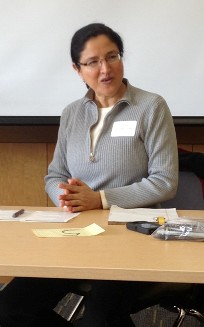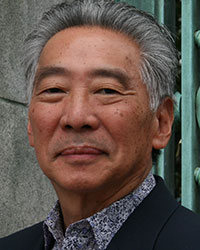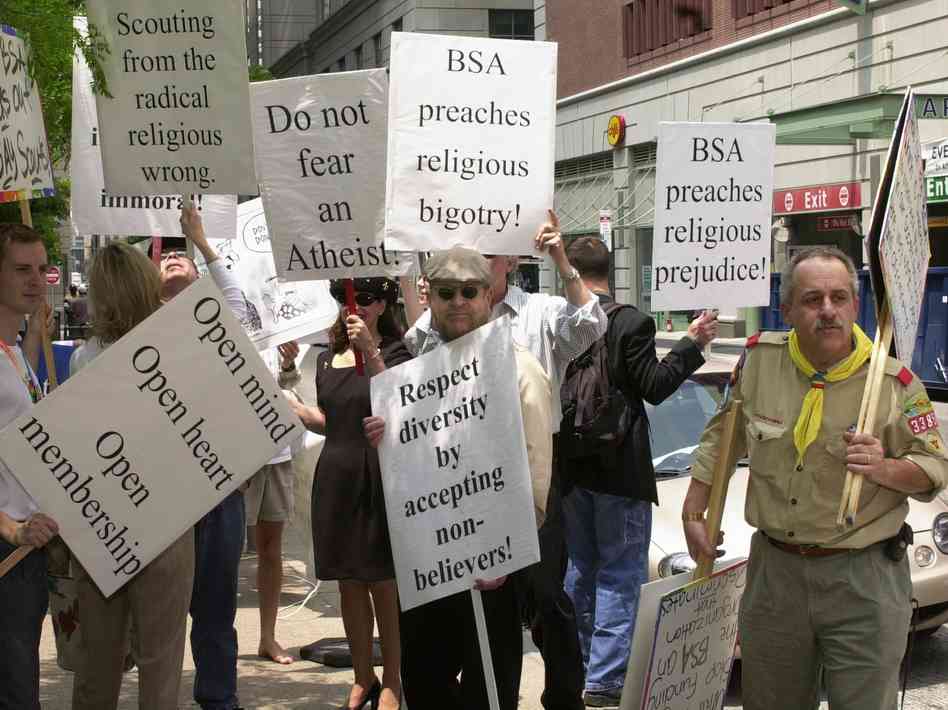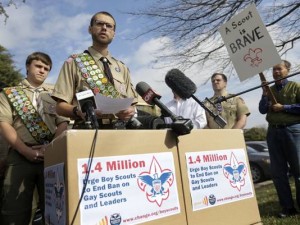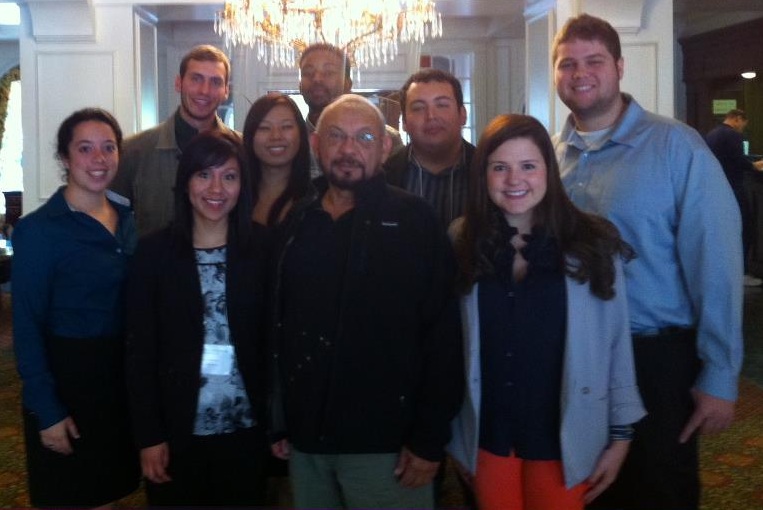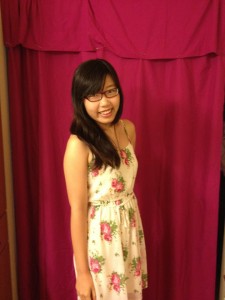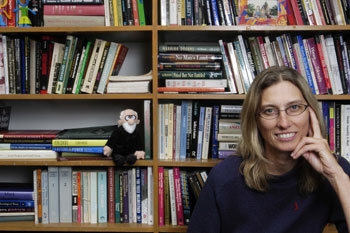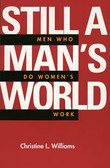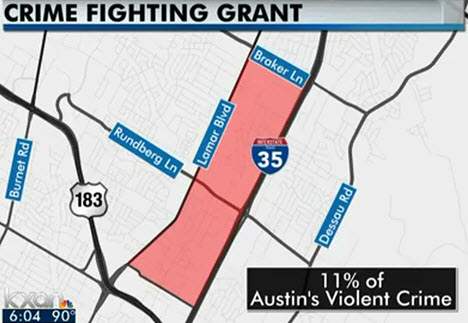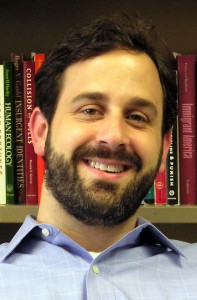By David Glisch-Sanchez
I have often shared with friends and mentees interested in graduate training my personal belief and observation that one of the greatest occupational hazards of a career in academia is the ego. I am not using ego as a euphemism for arrogance or a vain sense of superiority, although that could very well be a particular manifestation of the ego. Neither am I referring to the psychological understanding of the ego as one of the key structures of the human psyche. Rather, I am drawing on notions of the ego as described by the philosopher and spiritual teacher Eckhart Tolle. His conceptualization of the ego detailed in A New Earth can best be understood as a false sense of self that is created by the mind. For Tolle, the true self or essence of any human being is formless (some may refer to this as the soul); its value innate and complete from the very start. What is of relevance to this discussion are not the esoteric arguments or details that Tolle’s writings provide, but rather the practical lens he offers for understanding human behavior and social interactions.
Tolle explains that the process of identification is the primary means through which the ego develops and functions. He defines identification as the process by which the mind begins to conceptualize and define the self. As Tolle explains, our minds begin to imbue objects (car, house, clothes, books, etc.), labels/titles (professor, teacher, endowed chairship, parent, child, etc.), and ideas (dissertations, articles, presentations, books, etc.) with a sense of self. In other words, we accept these objects, labels/titles, and ideas as extensions of ourselves (we identify with them and want to be identified by them); we externalize our selfhood, and ultimately link our sense of self-worth and value to all of the things wherein we place our sense of selfhood. Therefore, the ego is a false sense of self because it represents identification with things that in reality have nothing to do with who we are essentially. What does this mean then for sociologists and other academics? And, why is it an occupational hazard?
Sociology, like any other scholarly discipline or field of study, is populated with individuals who love to think and are full of ideas on a range of topics. We are a profession whose chief commodity is ideas and by extension our greatest resource and tool is always believed to be our intellects or minds, which is the very home and source of the ego. We treat our own minds with such reverence that we often are not aware of all it does and how we choose to use it. Ironically, I believe intellectually we all can understand how placing a sense of self or identifying ourselves with external objects or labels/titles is erroneous. We can understand how, maybe even why, a Wall Street banker draws a strong sense of self via the material objects she/he may possess, or how an elected leader or those in formal positions of power draw their sense of self from their titles and positions. The problem then becomes any action taken to regulate, constrain, or challenge those things in which people place their senses of self is understood and interpreted as a personal attack that must be defended at all costs. The Wall Street banker balks at financial regulation because it might or will cause them to earn $350,000 instead of $400,000, and because their sense of self has been placed in their wealth it is felt deeply as a violation. When a politician’s authority, actions, or policies are questioned and their position potentially in jeopardy, it is often seen by the officeholder as a betrayal and serious threat, which explains why so many elections are fought ferociously.
I am arguing that it is often harder, especially for scholars, to be aware of the many ways we integrate our sense of self with our ideas and intellectual arguments. This difficulty in being aware on some level is understandable. Our ideas, arguments, and analysis ostensibly come from our minds, and how could our minds and the products thereof not be who we really are, right? My observations and arguments presented here, is not to say that our ideas have no relationship at all to who we are, but rather to caution against an over-identification with our ideas as representing all, most, or a lot of who and what we are as human beings. It is this over-identification or over-placement of self into our ideas that structures a vast swath of our professional lives.
We all have experienced this misplacement. As graduate students, how many of us have felt the need or impulse to enter into our weekly seminars as intellectual gladiators having or wanting to prove that our interpretation and analysis of the assigned readings is not only correct but also the most insightful? How many of us have witnessed tense exchanges at professional meetings between disciplinary colleagues bent on proving the other wrong or misguided and by virtue themselves right and enlightened? How often have any of us felt the pangs of disappointment, no matter how subtle or pronounced, at the news of a colleague’s work being published or receiving an award, recognition, or funding, feeling as though something has been taken from us? Or, how about the endless comparisons and recriminations that can occur when friends or colleagues are on the job market always waiting to see who gets the “best” job at the “best” institution?
The manifestations of the ego, the false self, within academia are countless, as they are with any other profession. However, I would like us to consider collectively the price we pay for the “luxury” of such false senses of self. What is the cost in creating an environment where we evaluate our worth and the worth of our colleagues through the lens of whose ideas are “most innovative,” whose ideas add “most” to our knowledge base, who gets the awards and accolades, and what kind of institution or department one is employed at? The cost is that we create a structure that incentivizes confrontation over cooperation, denigration over constructive feedback, and dismission over consideration. All of this is made possible, in large part, because of the ego, the process by which we come to define who and what we essentially are. We must vehemently defend our ideas because they are a part of us; as sure as our arm is a part of who we are. We must dismiss or qualify someone else’s success so that it does not seemingly diminish our own. We berate ourselves for not getting five campus visits when we had three.
Perhaps, in my own opinion, the most costly consequence of this occupational hazard is the zero-sum, all-or-nothing norm that has infiltrated our scholarly-enterprise. This is especially true within graduate student culture, where we often dismiss the entire work of an author because we find one, two, or even three disagreements with what they have presented. Often these disagreements are seen through the prism of our very own work, and thus have a vested interest because of our ego in the debunking of someone else’s scholarship. Many things are evaluated through the lens that either all information presented is right or none of it at all. We throw the proverbial baby out with the bathwater. As a result, we miss out on the opportunity to honestly and thoughtfully learn from our colleagues and peers, and vice versa. Additionally, we hold ourselves hostage to the impossible standard of always being right in every detail as it concerns our research. We might likely find it hard to admit errors and mistakes because of how our entire body of work will be evaluated, but especially of our fears of what it says about who we are as people if one or more of our ideas may not be correct or capture the full complexity of a particular phenomenon. The ego does not allow for a humble self-reflexive analysis of our or anyone else’s work.
Contrary to the tone at times of this piece, I am an optimist. I do not believe that sociology (or any discipline) or our profession as scholars is always mired in this dynamic; however, it all too often is. I have experienced classes, colleagues, and mentors who have been very generous in their simultaneous support and constructive feedback. The question becomes: how do we more consistently interact and treat one another with consideration, cooperation, and constructive feedback? In my observation, it often starts with an awareness of where and how we place our sense of self, where we draw our worth and value from, and an acknowledgement and sincere acceptance that our essence as individual human beings lays outside the scope of scientific measurement and evaluation. I have by no means perfected, or even come close, to fully embodying this shift in awareness; however, I do have a vision for how sociology and sociologists in our everyday activities can fulfill the very potential and promise of our discipline and profession. It is this potential and promise that inspired me to begin the long journey of becoming a trained sociologist.
So now begins the conversation, the real work of becoming a more perfect union, a better beloved community. What is your vision for our discipline and profession? How might we improve collectively?
David Glisch-Sánchez is a queer Latin@ scholar originally from the midwest (Milwaukee, WI to be exact!). Currently, he is pursuing his Ph.D. in Sociology at the University of Texas at Austin. His dissertation project is tentatlively titled “‘Listen to what your jotería is saying’: Queer Latin@s Confronting Violence, Seeking Justice.” In this project, he is investigating how transgender, lesbian, gay, bisexual, and queer Latin@s have experienced social harm/violence during the late 20th and early 21st centuries, what is the socio-historical context for their experiences, and how have ideologies of Latin@ gender and sexuality shaped these experiences.


